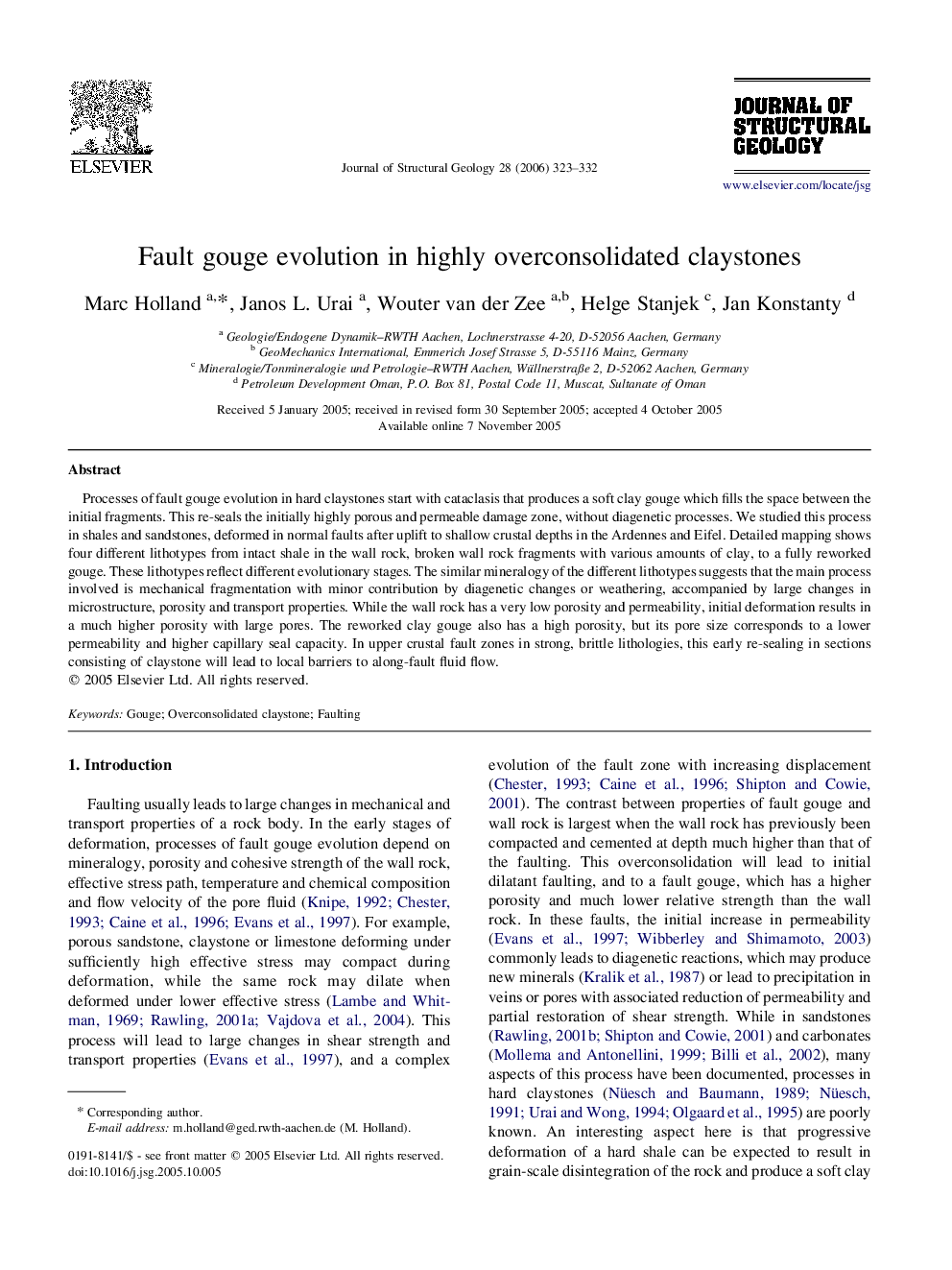| Article ID | Journal | Published Year | Pages | File Type |
|---|---|---|---|---|
| 4734291 | Journal of Structural Geology | 2006 | 10 Pages |
Processes of fault gouge evolution in hard claystones start with cataclasis that produces a soft clay gouge which fills the space between the initial fragments. This re-seals the initially highly porous and permeable damage zone, without diagenetic processes. We studied this process in shales and sandstones, deformed in normal faults after uplift to shallow crustal depths in the Ardennes and Eifel. Detailed mapping shows four different lithotypes from intact shale in the wall rock, broken wall rock fragments with various amounts of clay, to a fully reworked gouge. These lithotypes reflect different evolutionary stages. The similar mineralogy of the different lithotypes suggests that the main process involved is mechanical fragmentation with minor contribution by diagenetic changes or weathering, accompanied by large changes in microstructure, porosity and transport properties. While the wall rock has a very low porosity and permeability, initial deformation results in a much higher porosity with large pores. The reworked clay gouge also has a high porosity, but its pore size corresponds to a lower permeability and higher capillary seal capacity. In upper crustal fault zones in strong, brittle lithologies, this early re-sealing in sections consisting of claystone will lead to local barriers to along-fault fluid flow.
